RARE! WWII 1944 CONFIDENTIAL "New Hebrides Islands - New Caledonia" U.S. Army Air Force Pacific Theater Pilot’s Flight Chart (Double-Sided)
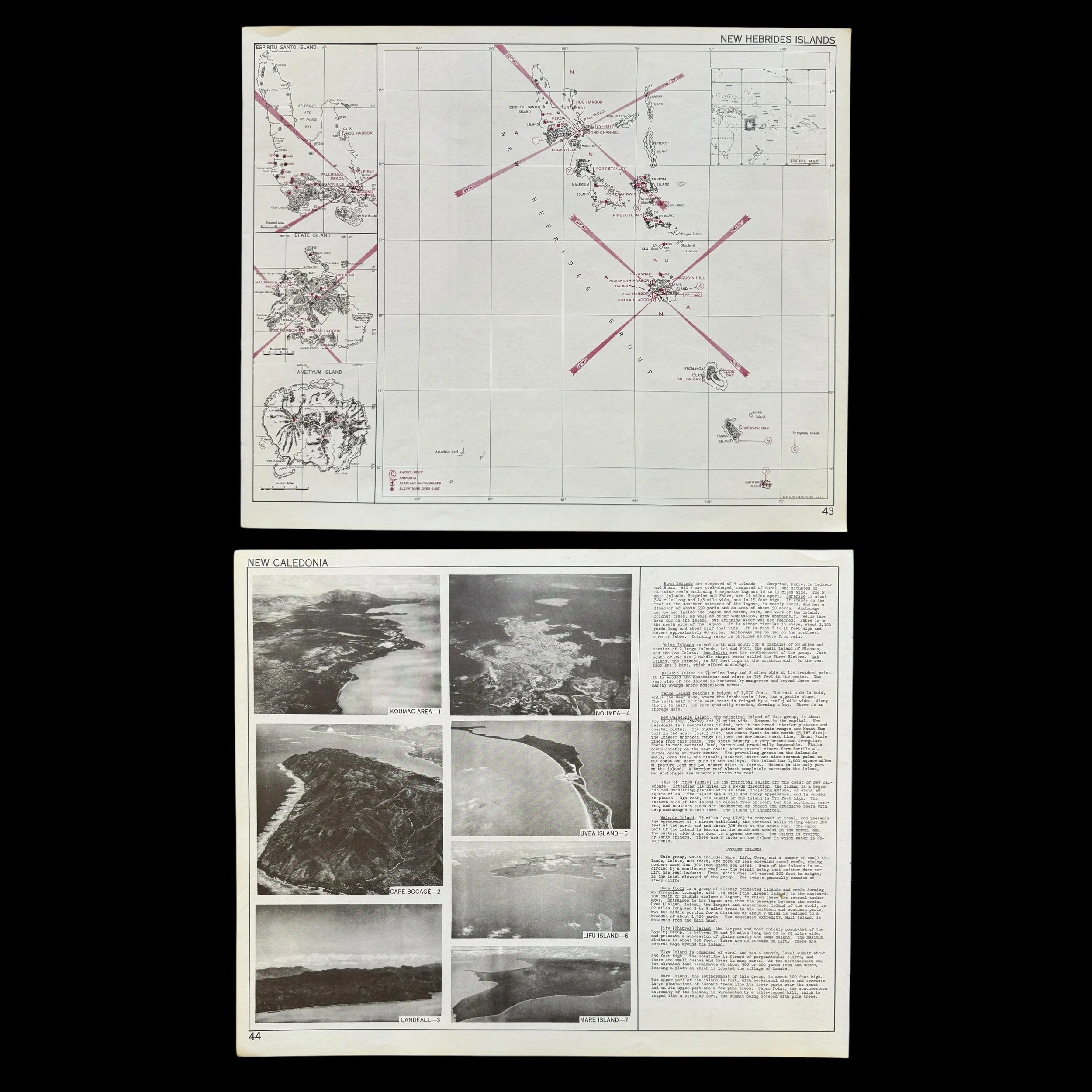
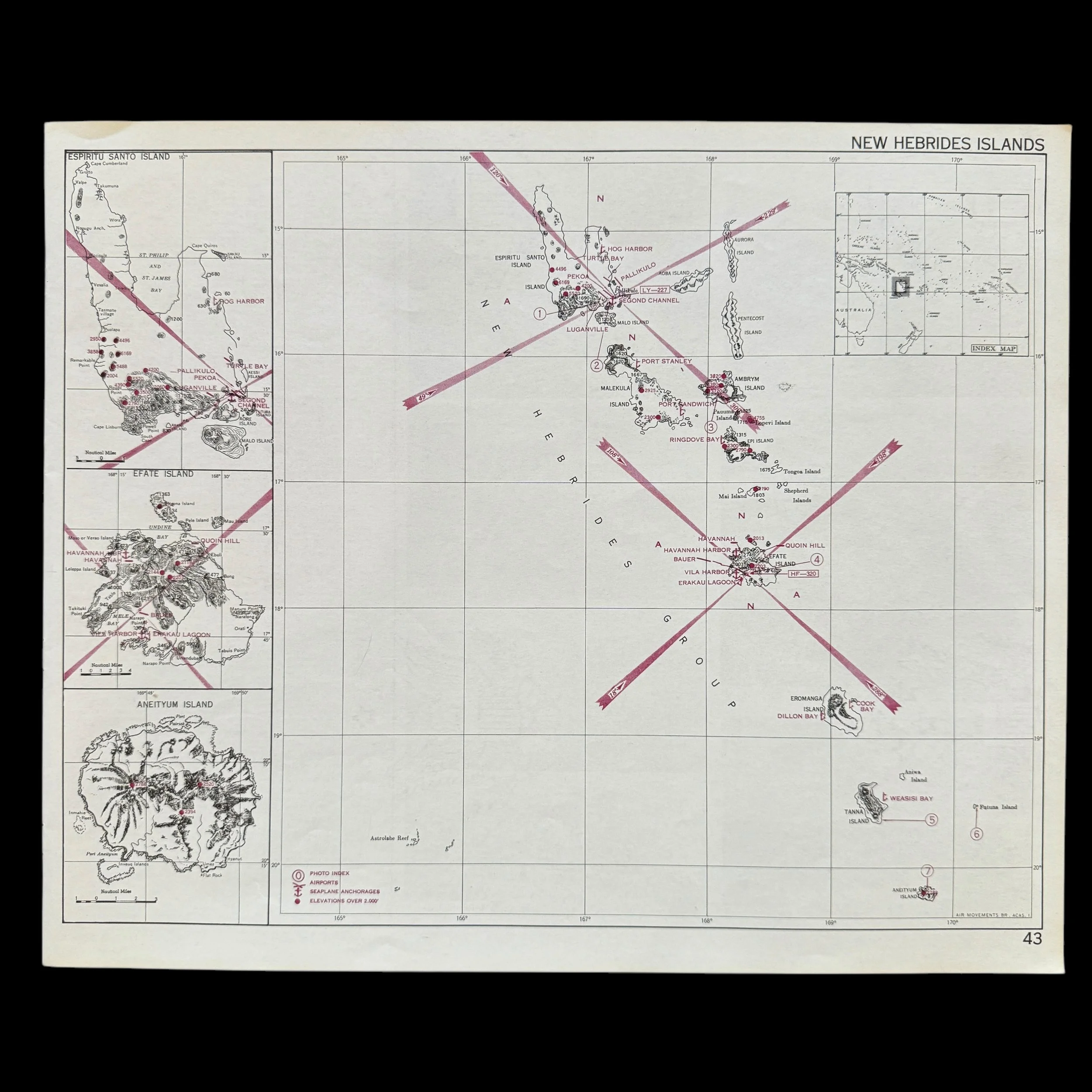
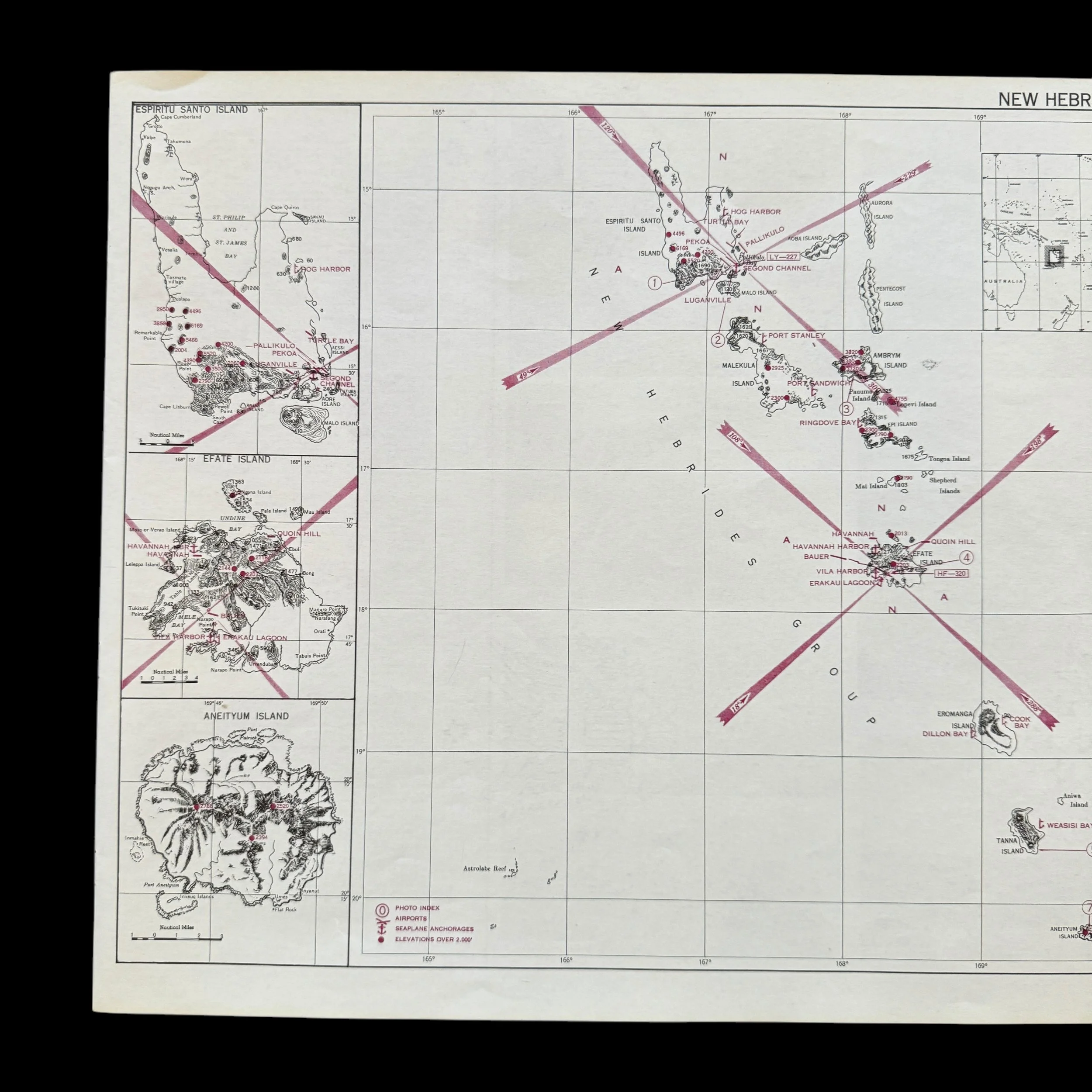
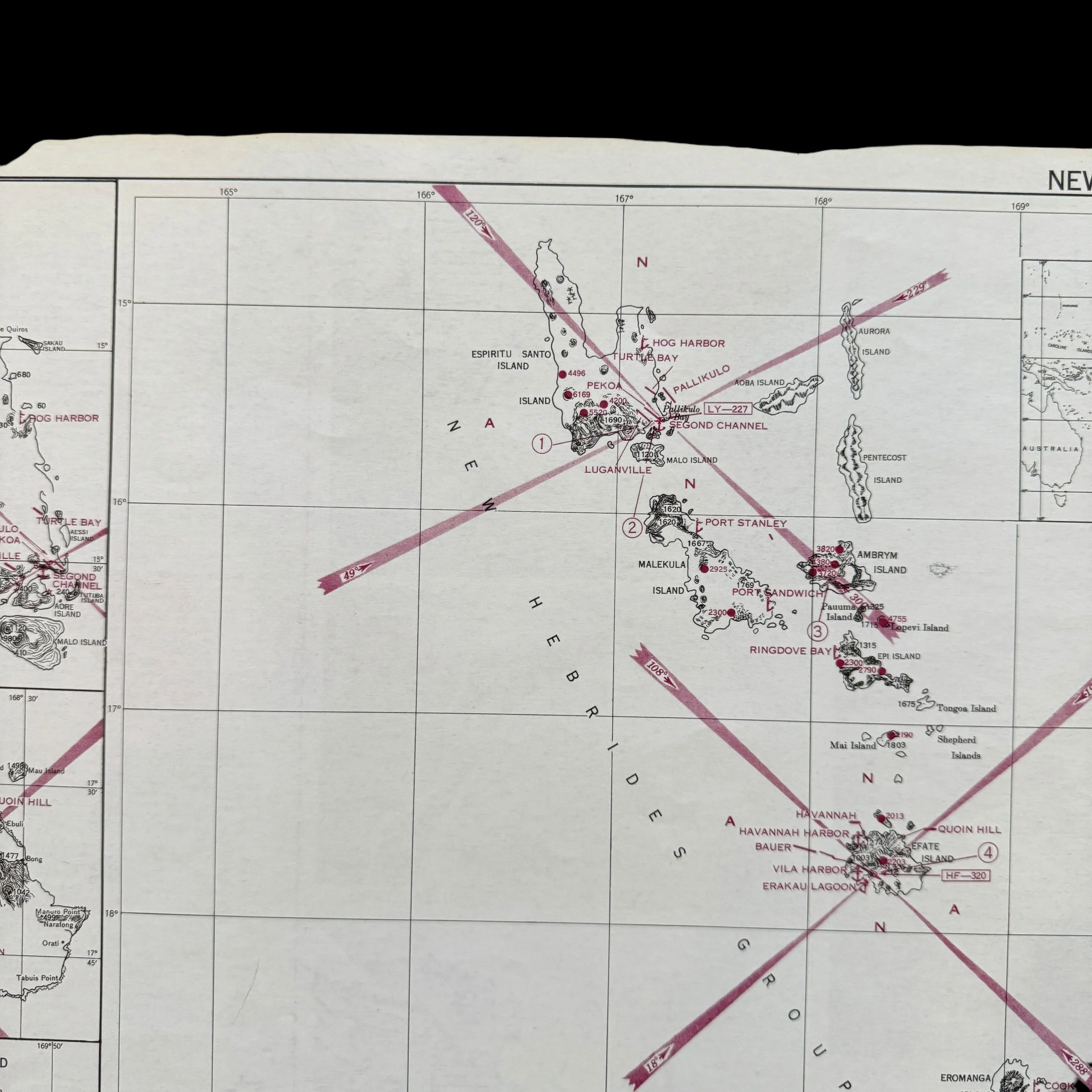
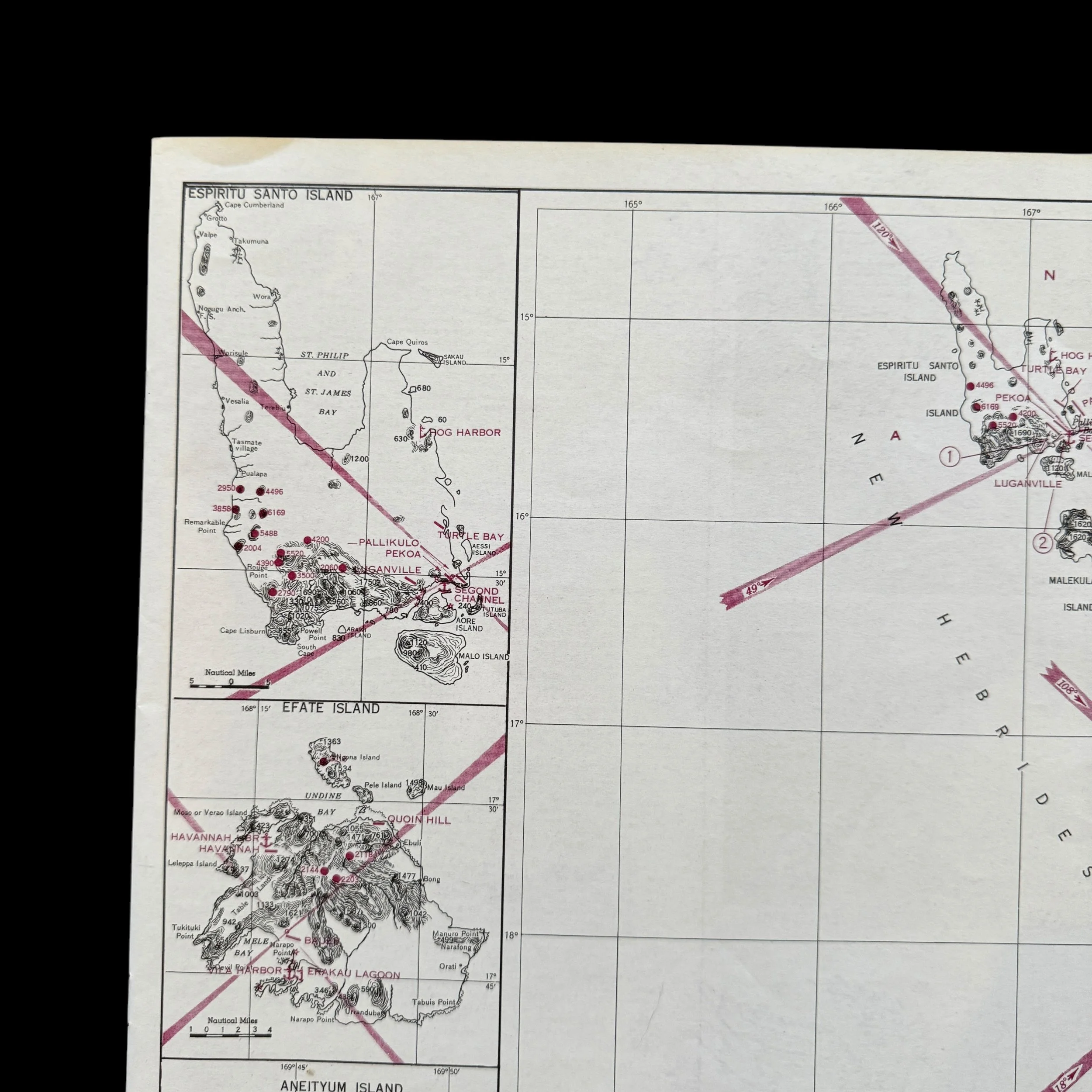

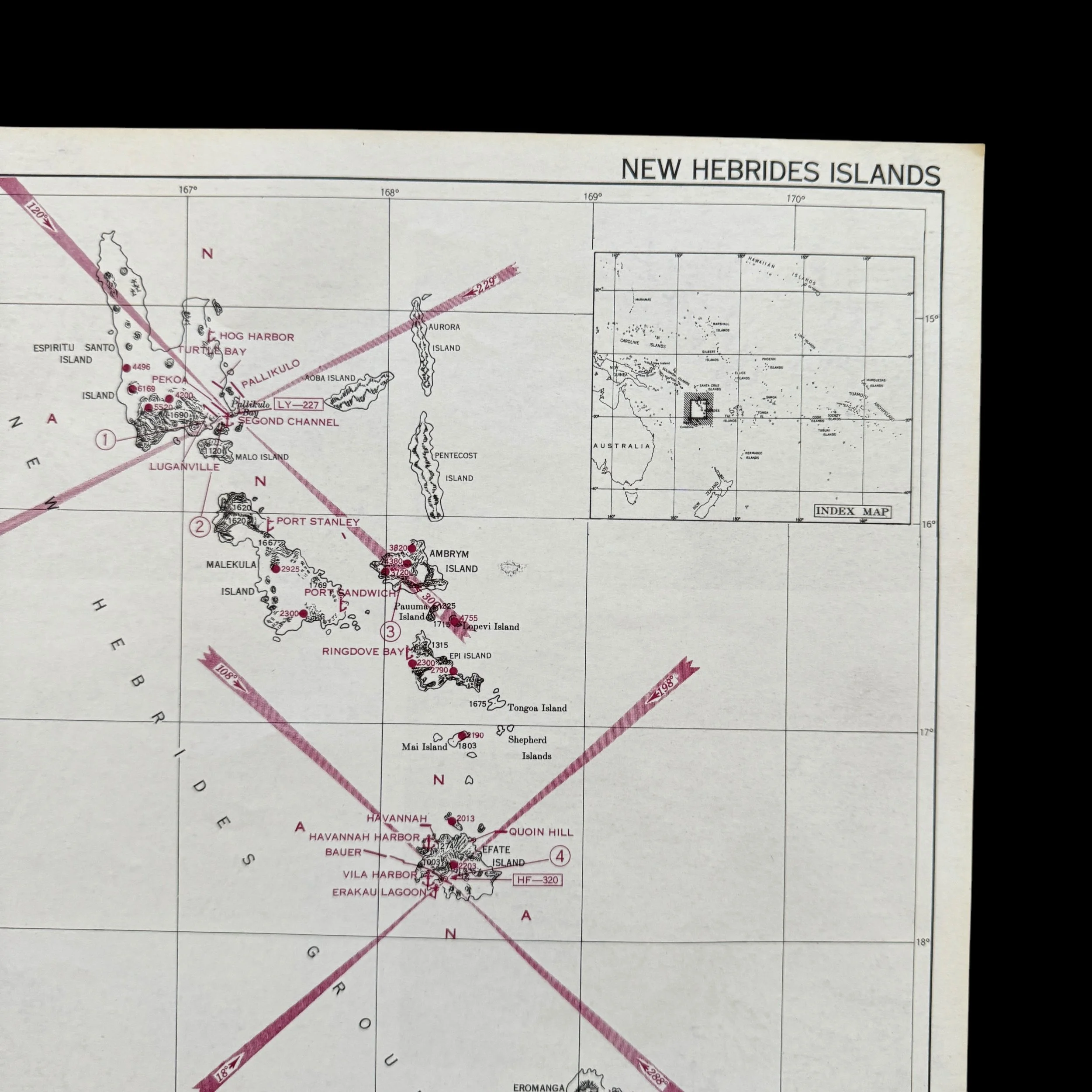
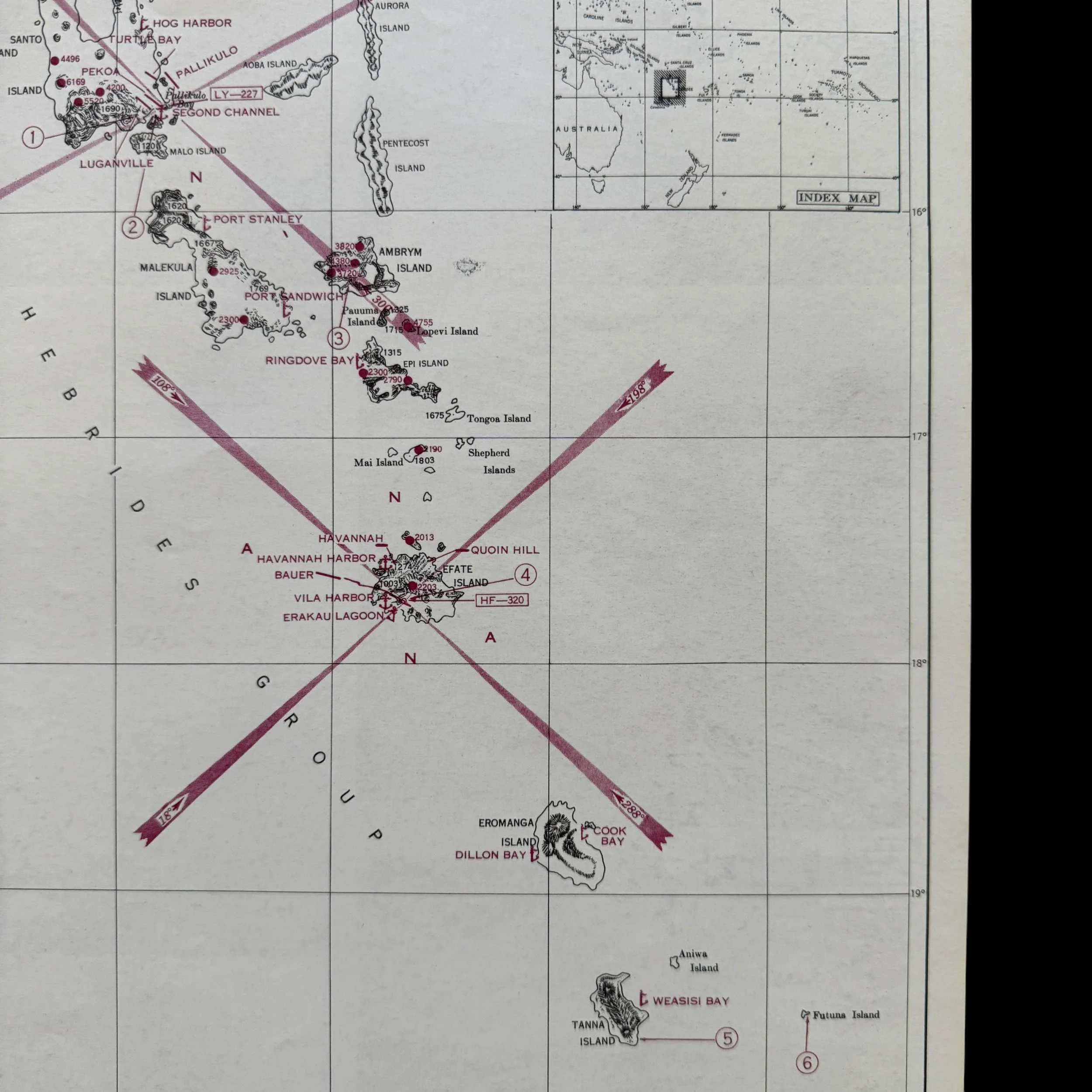
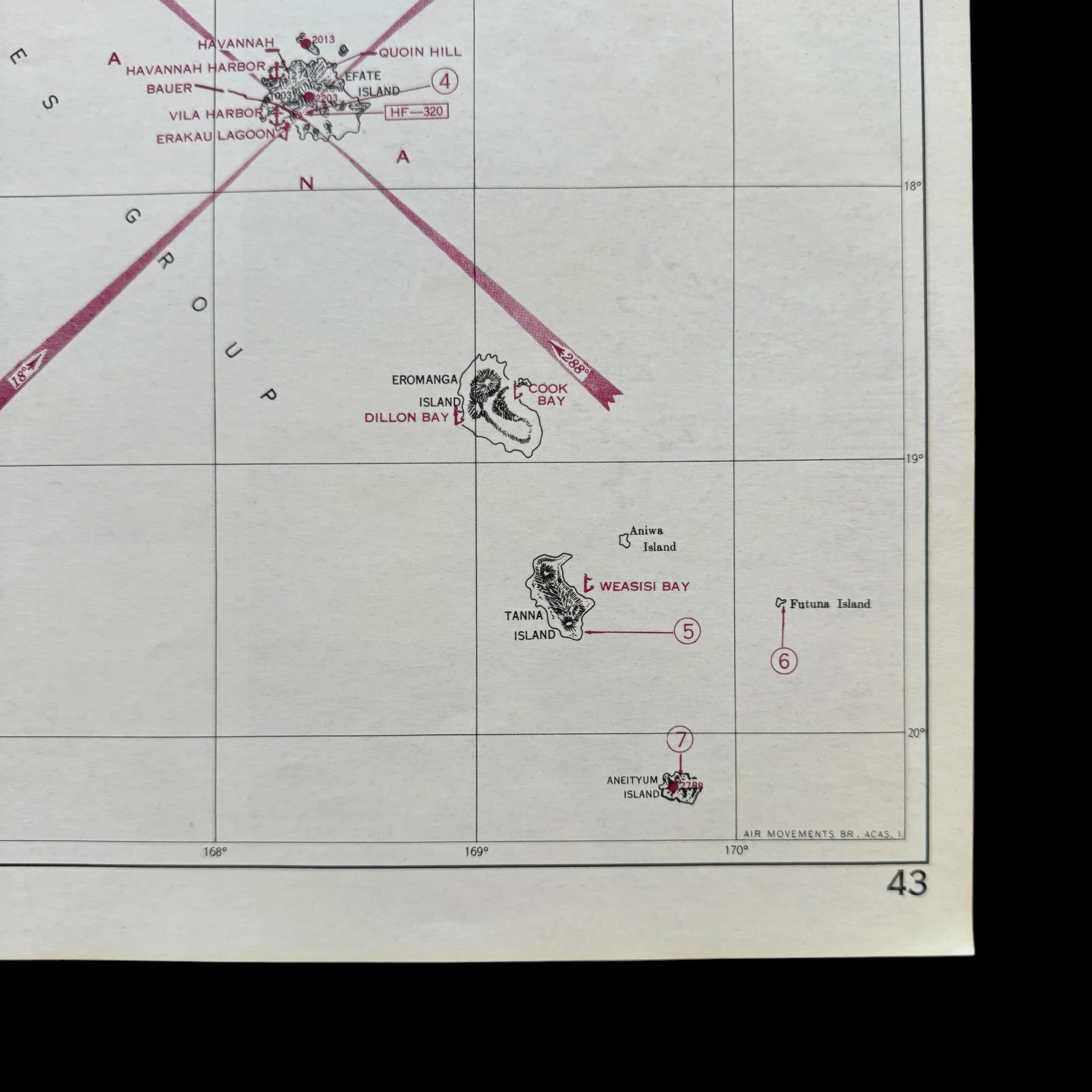
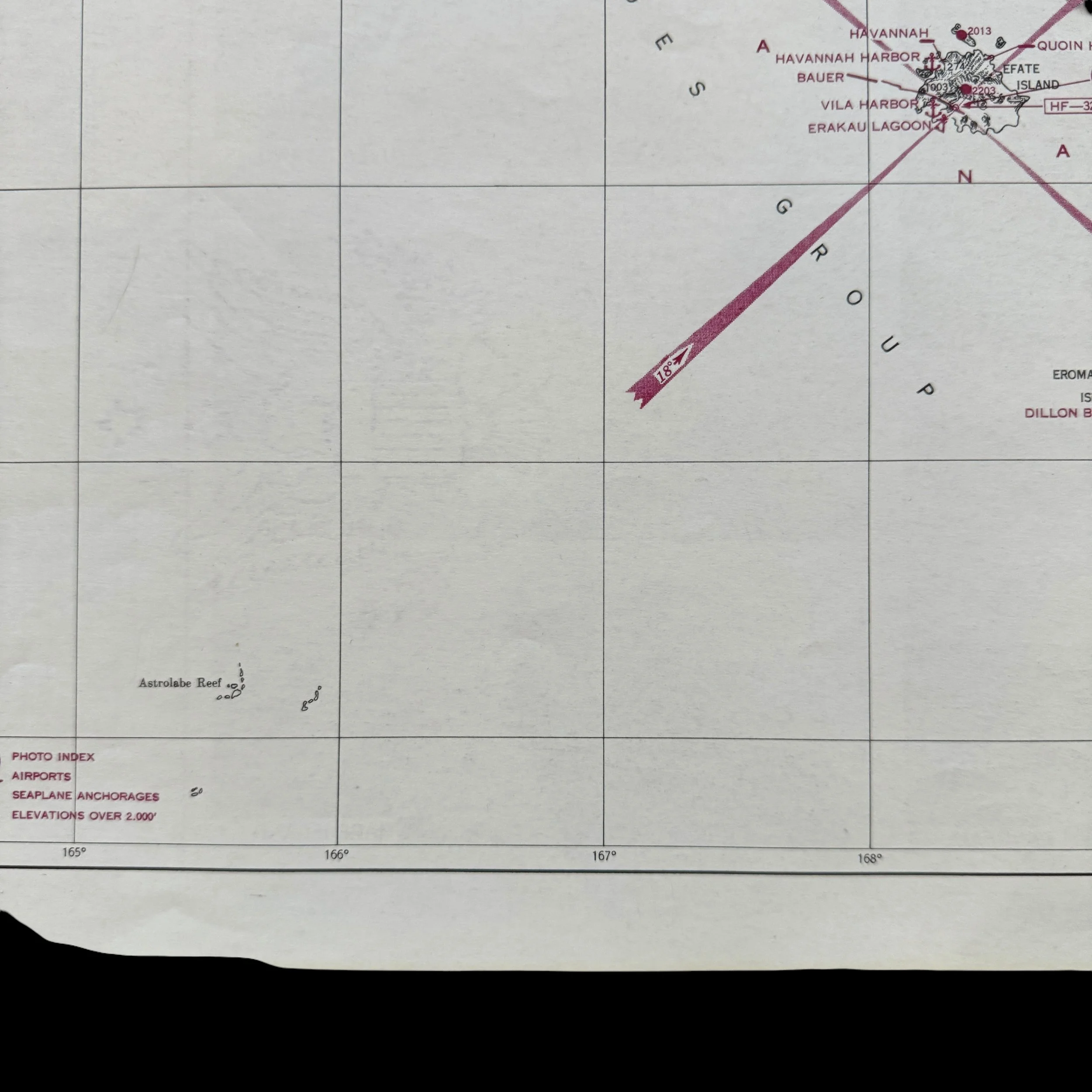
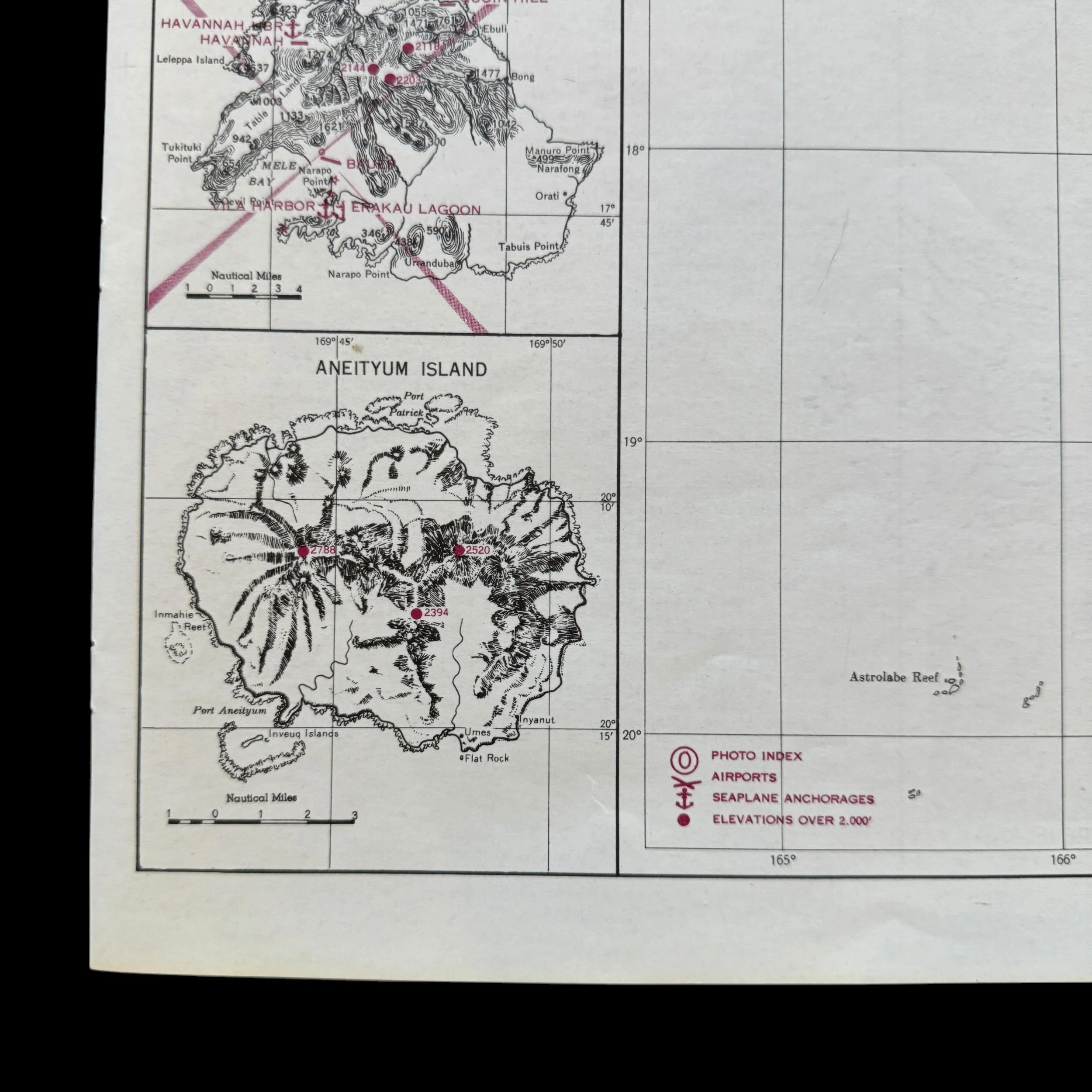
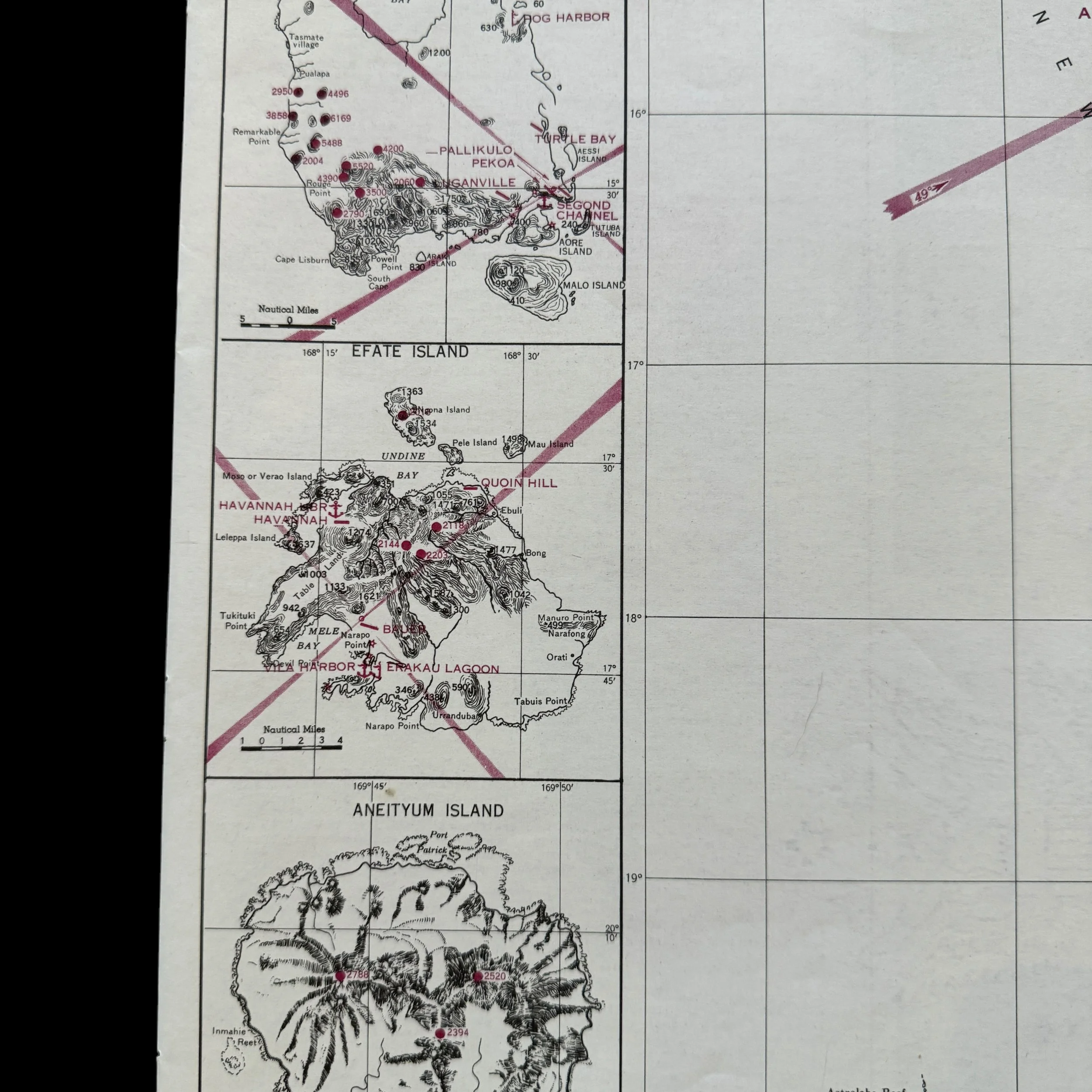
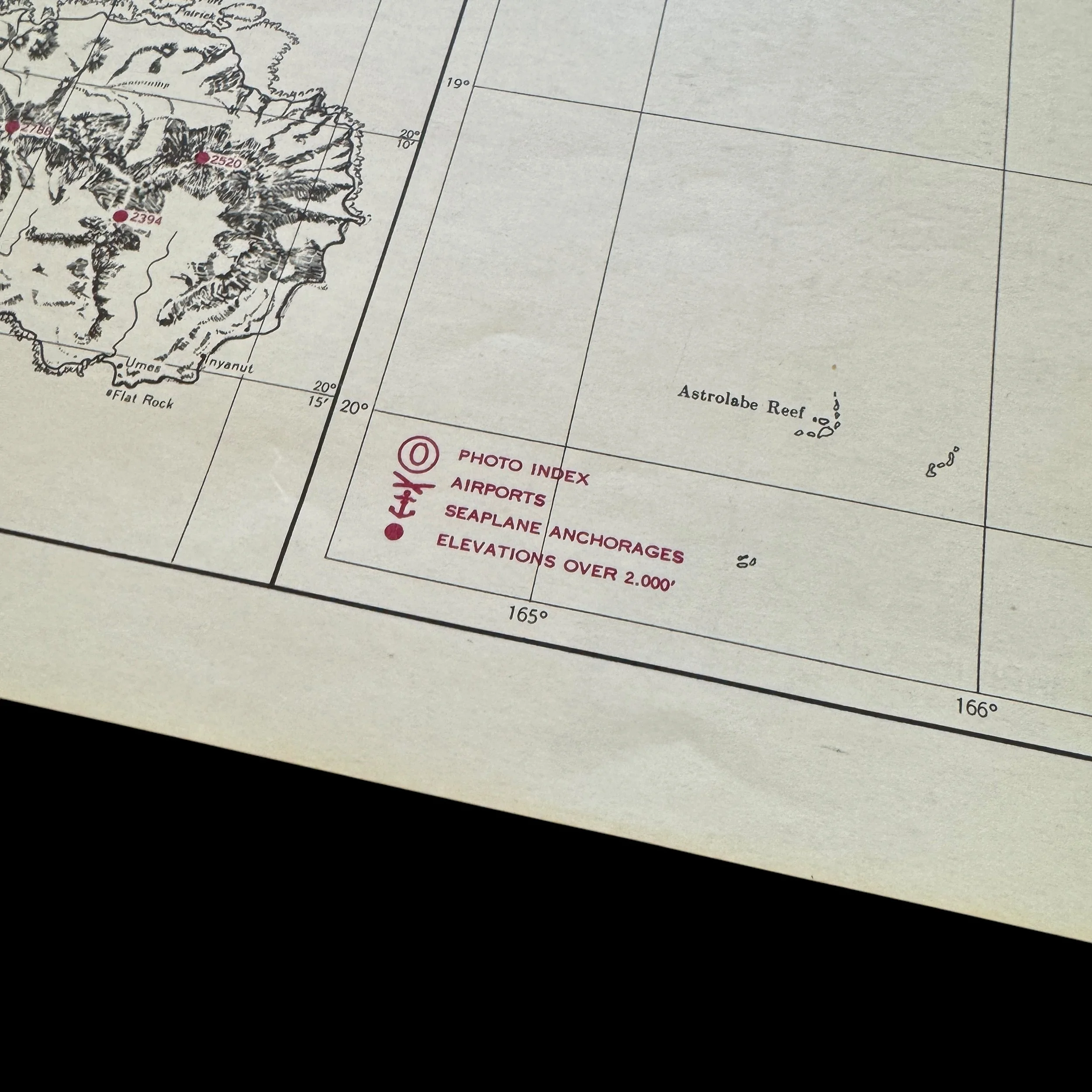
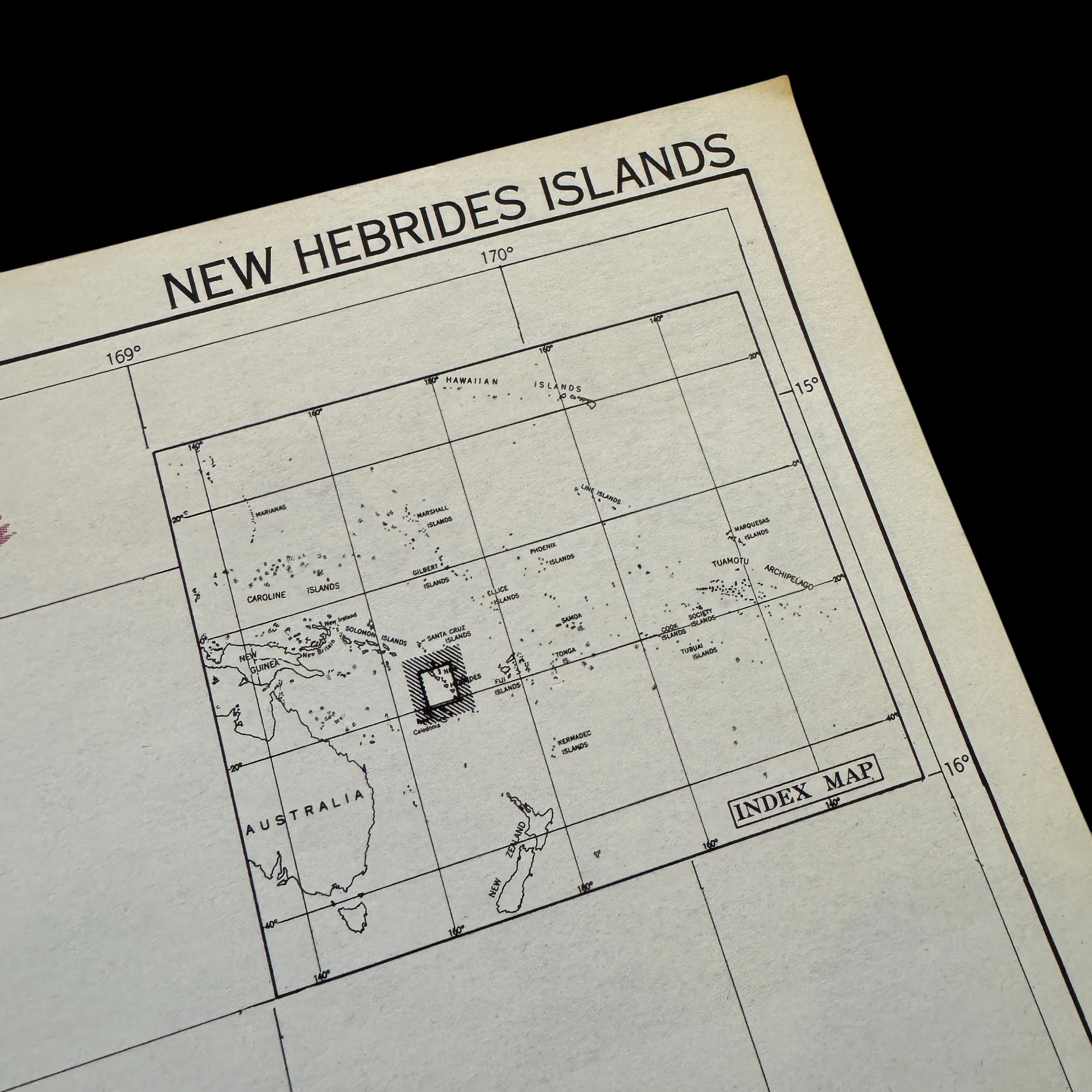
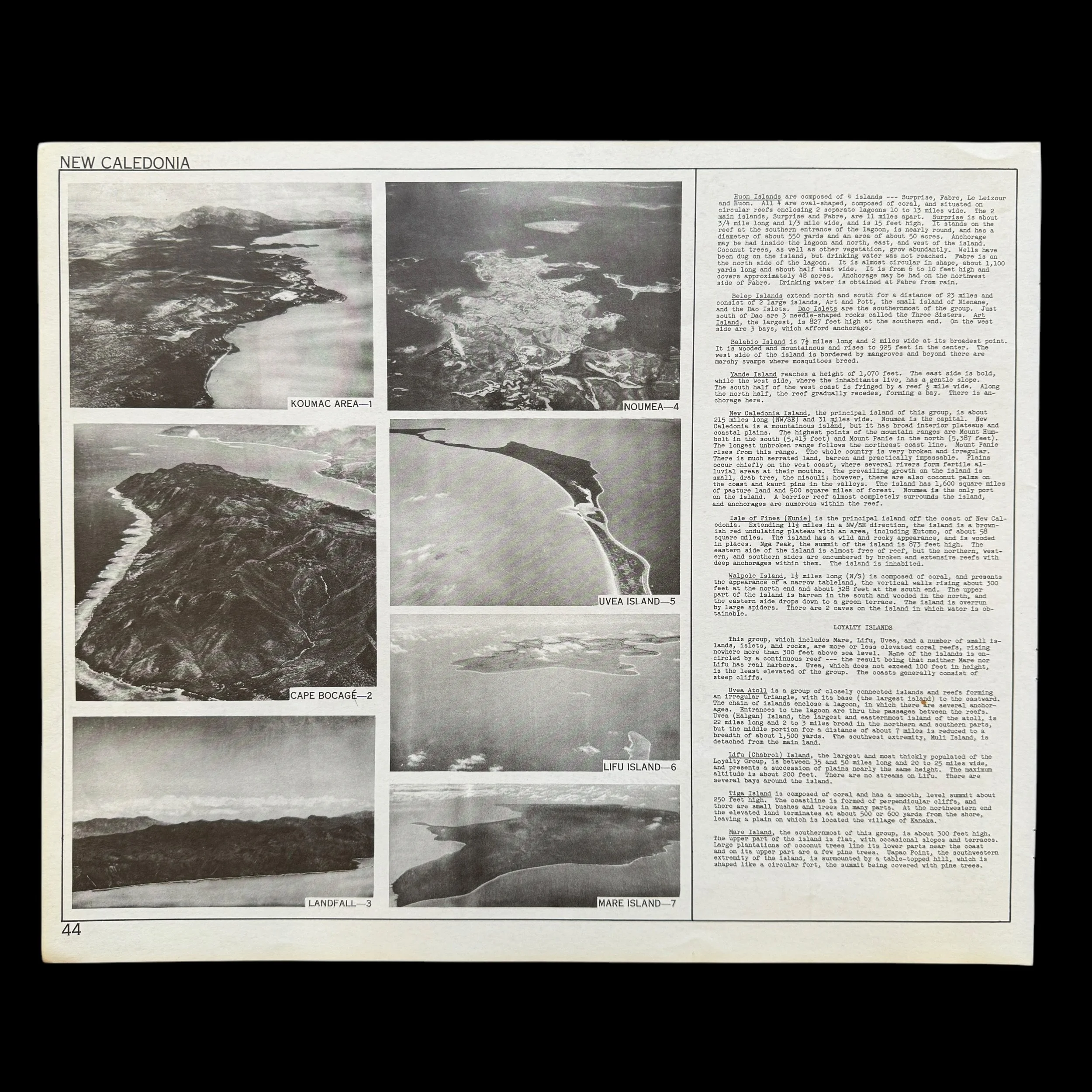
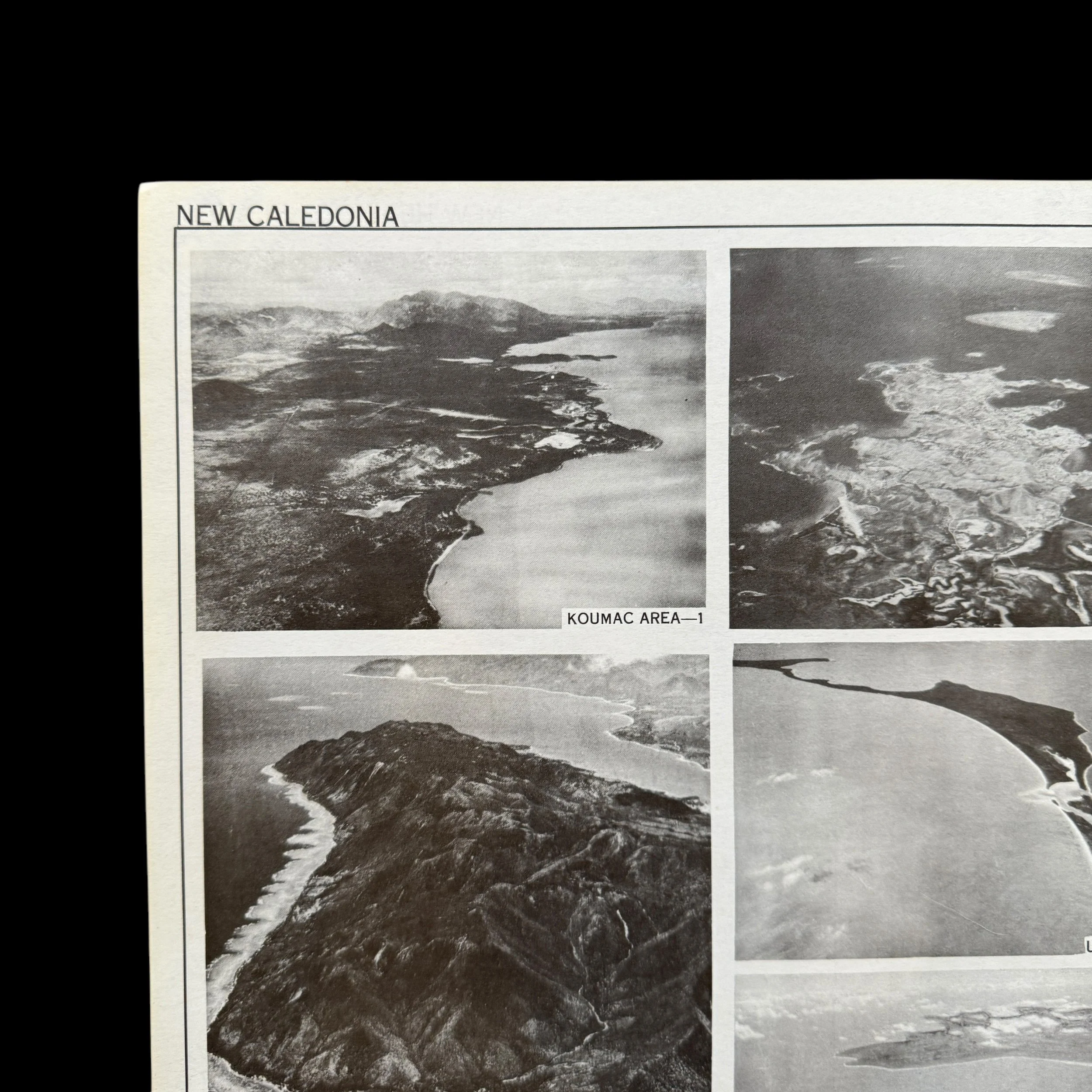
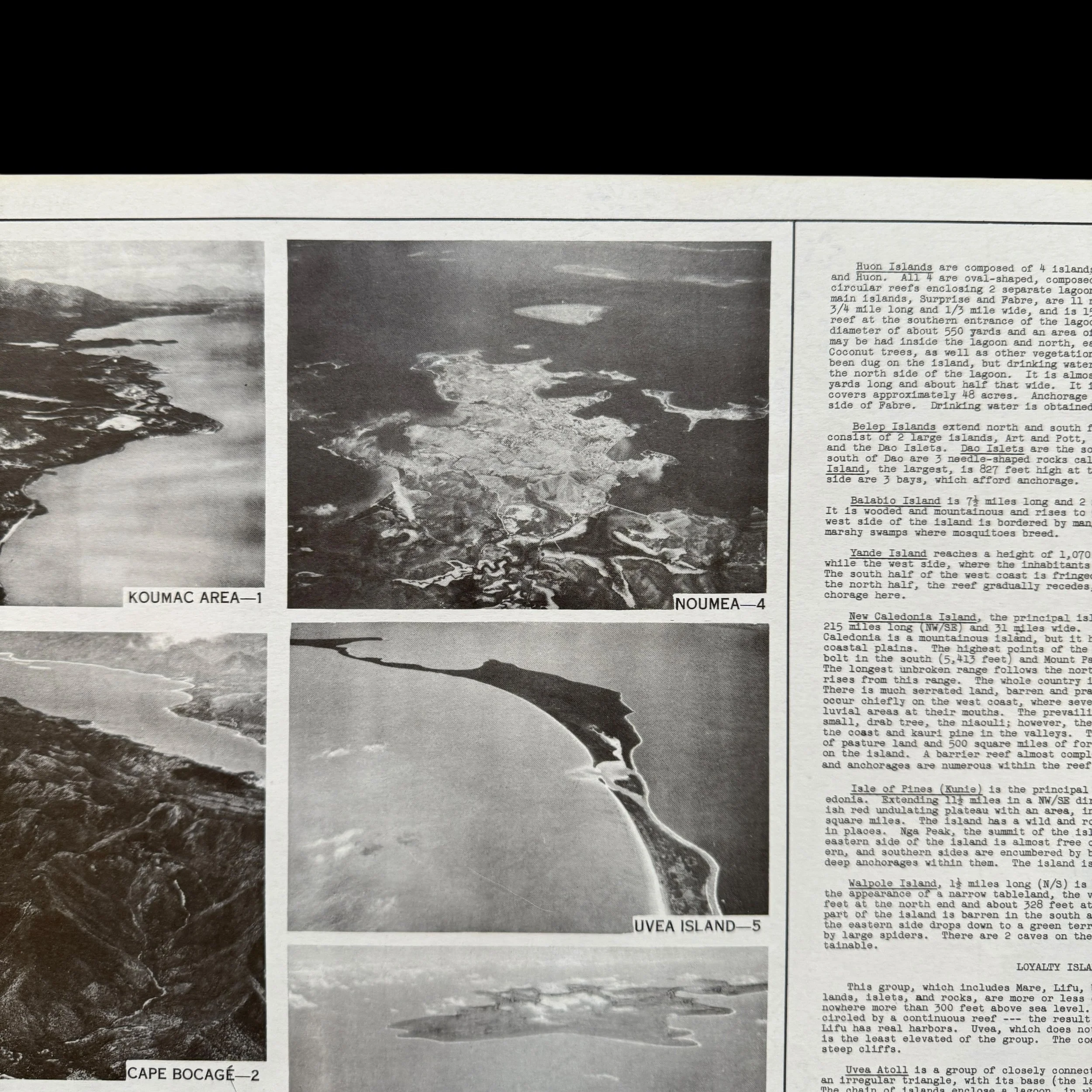
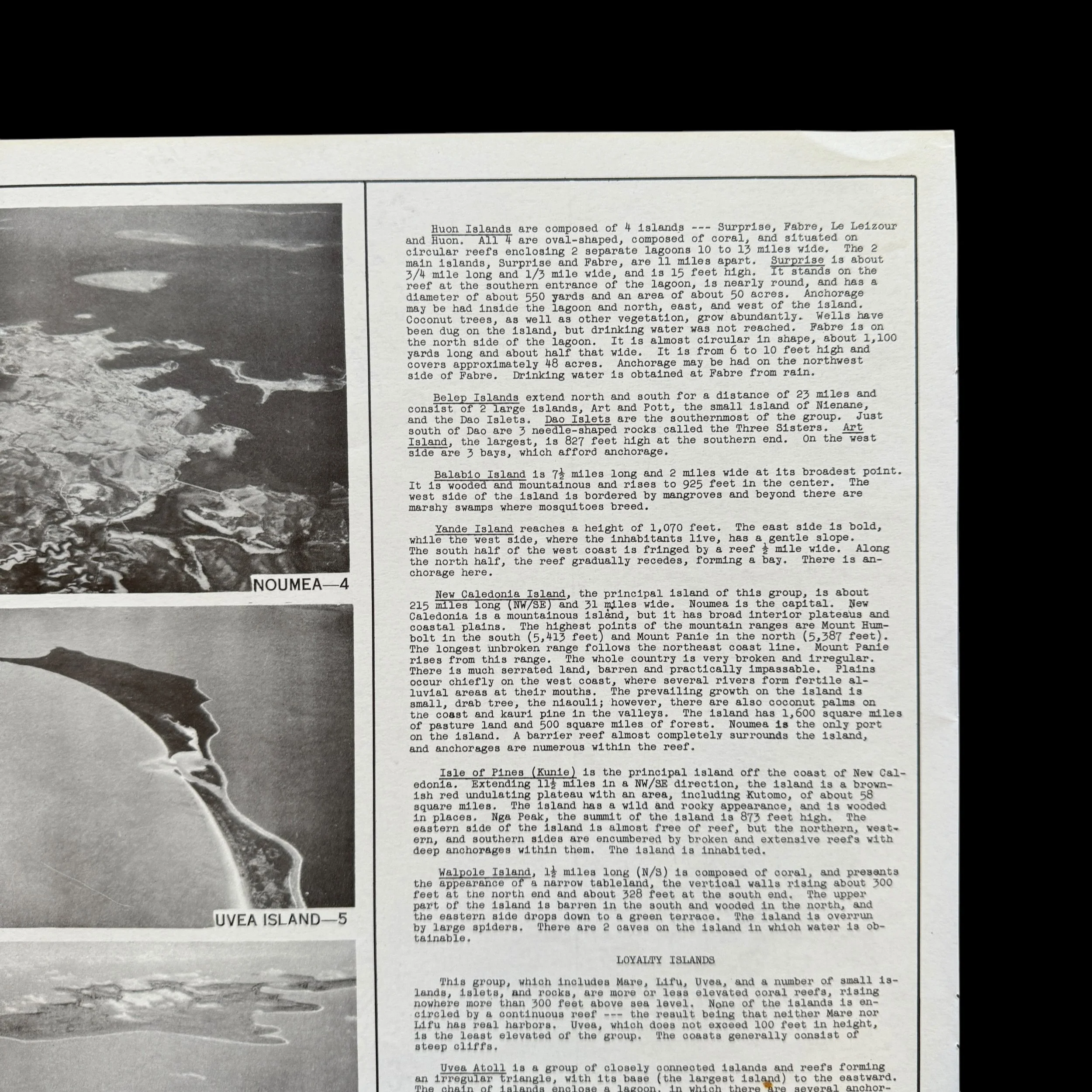
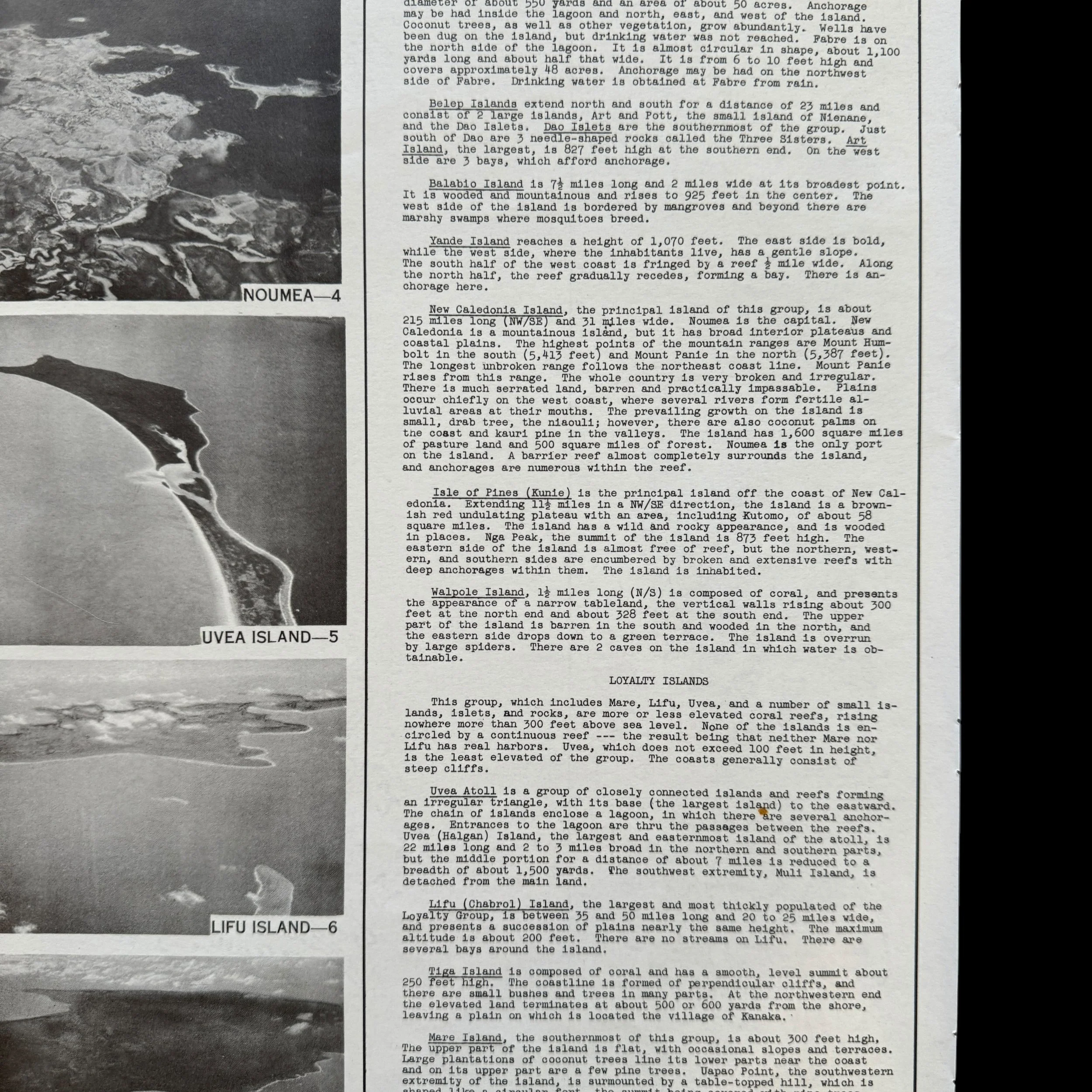
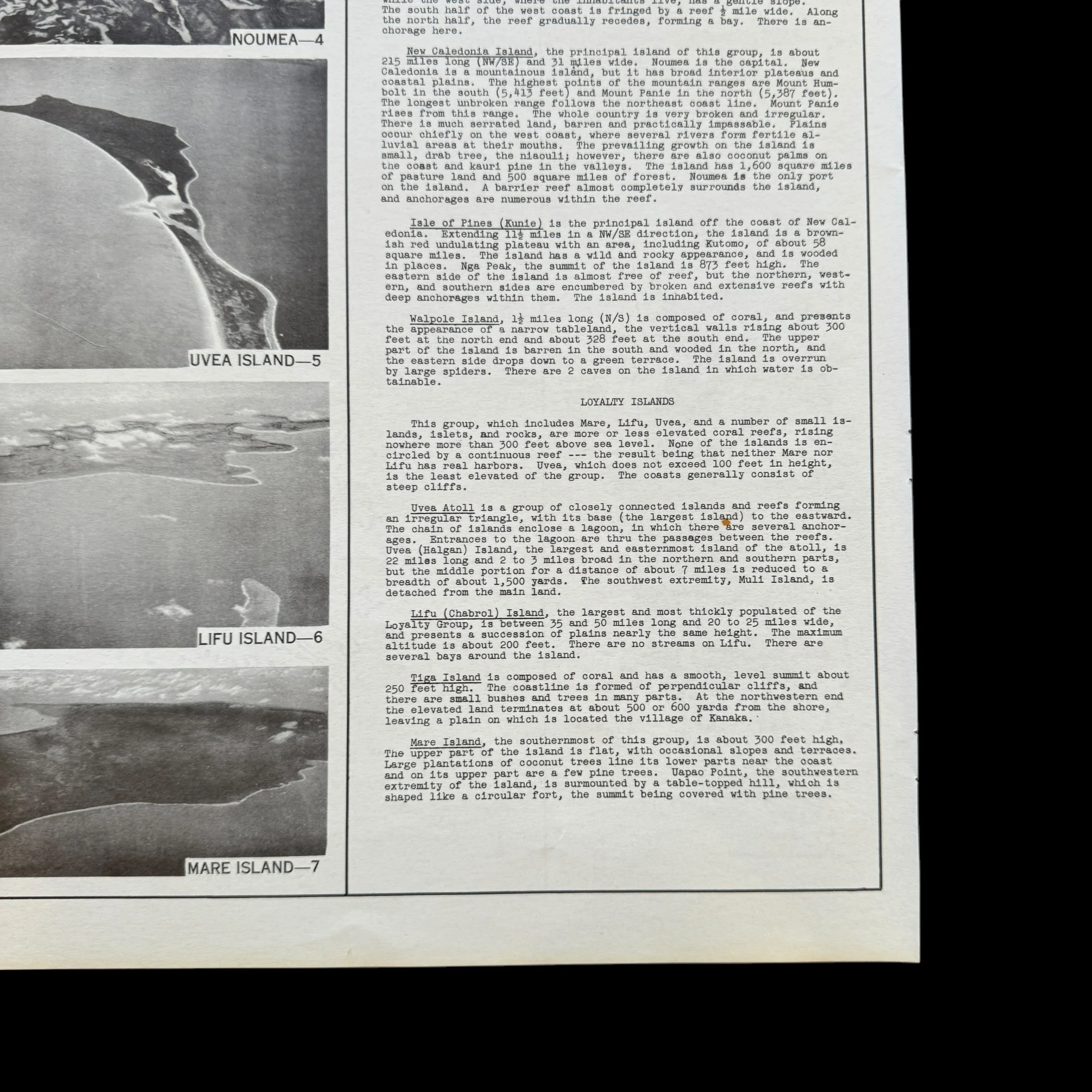

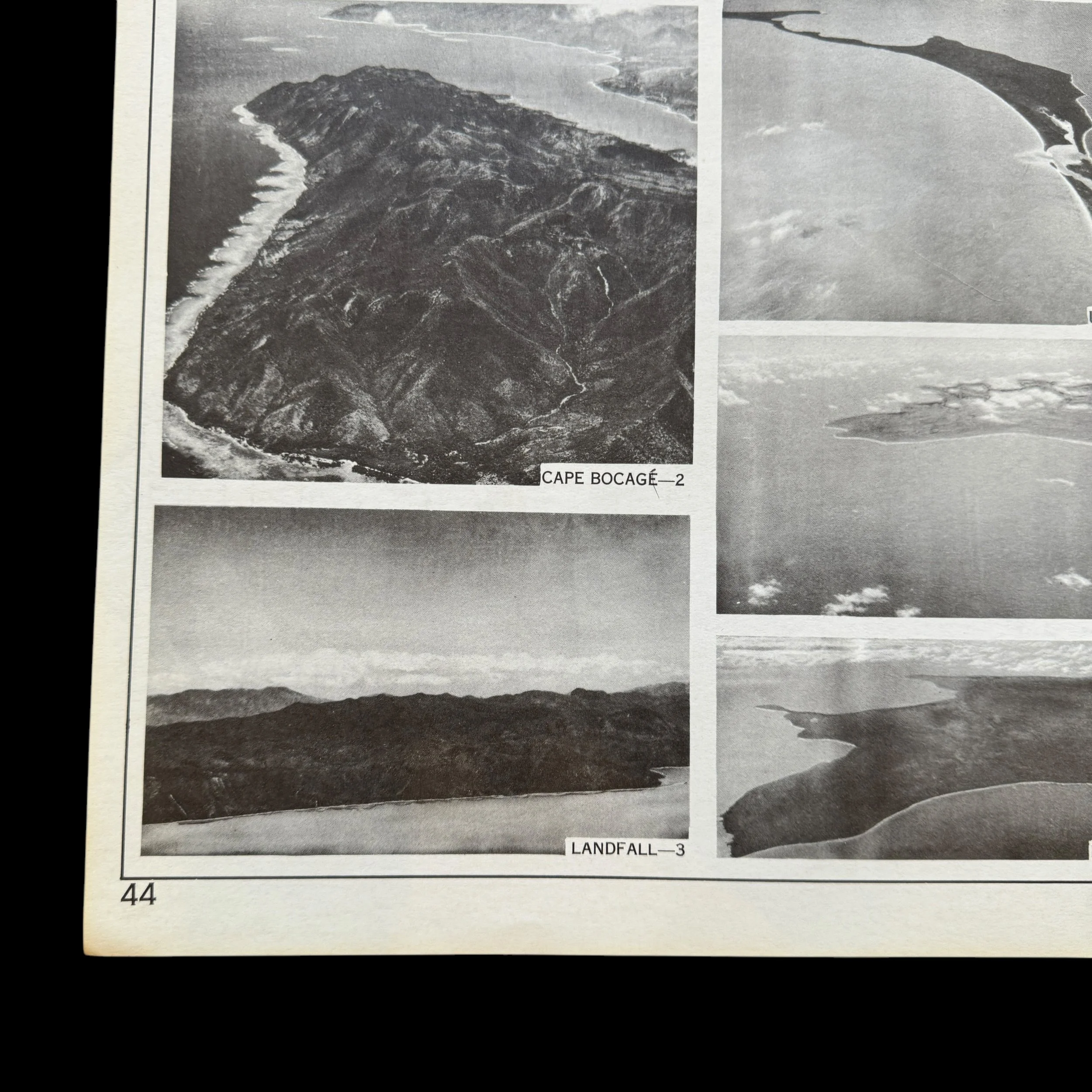
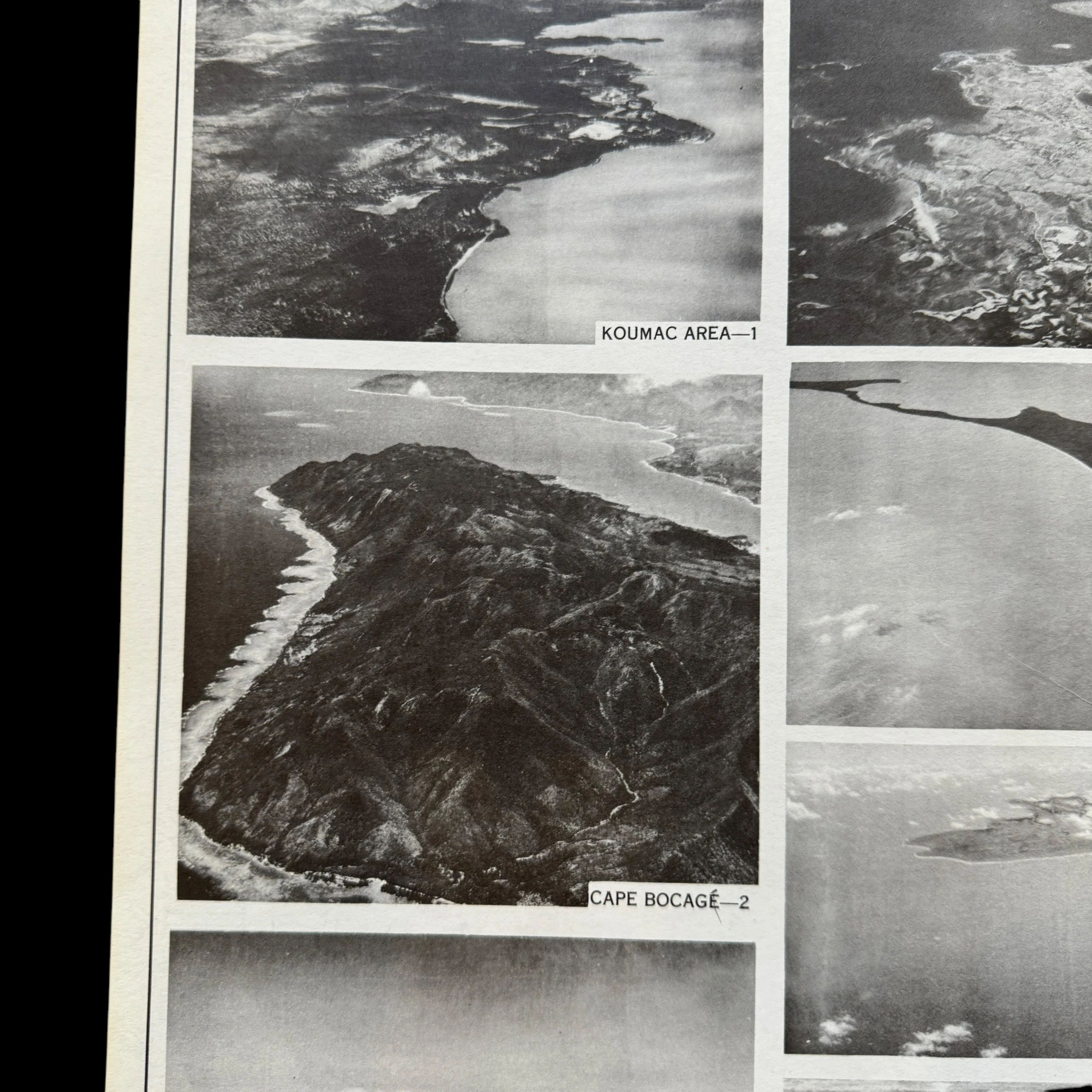
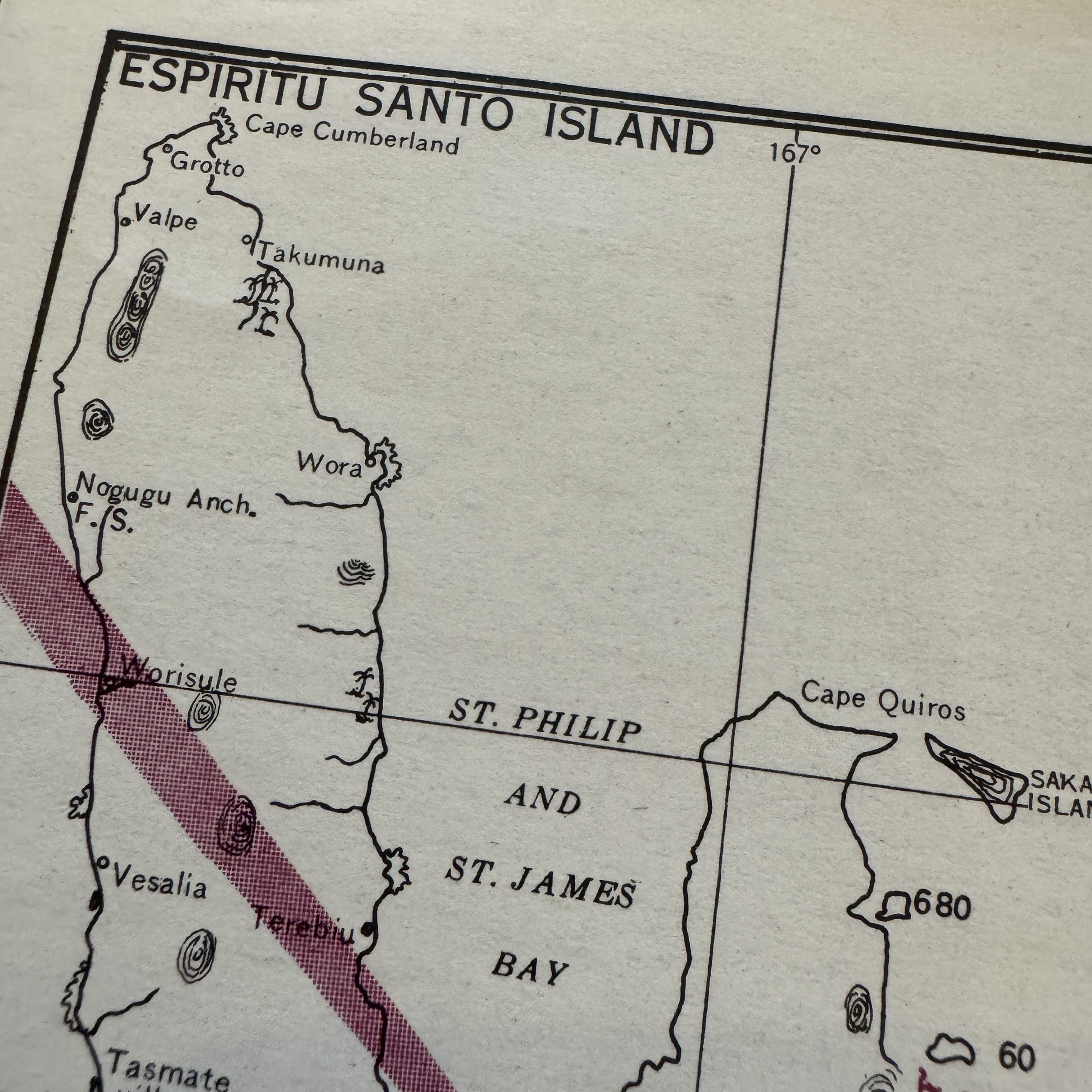


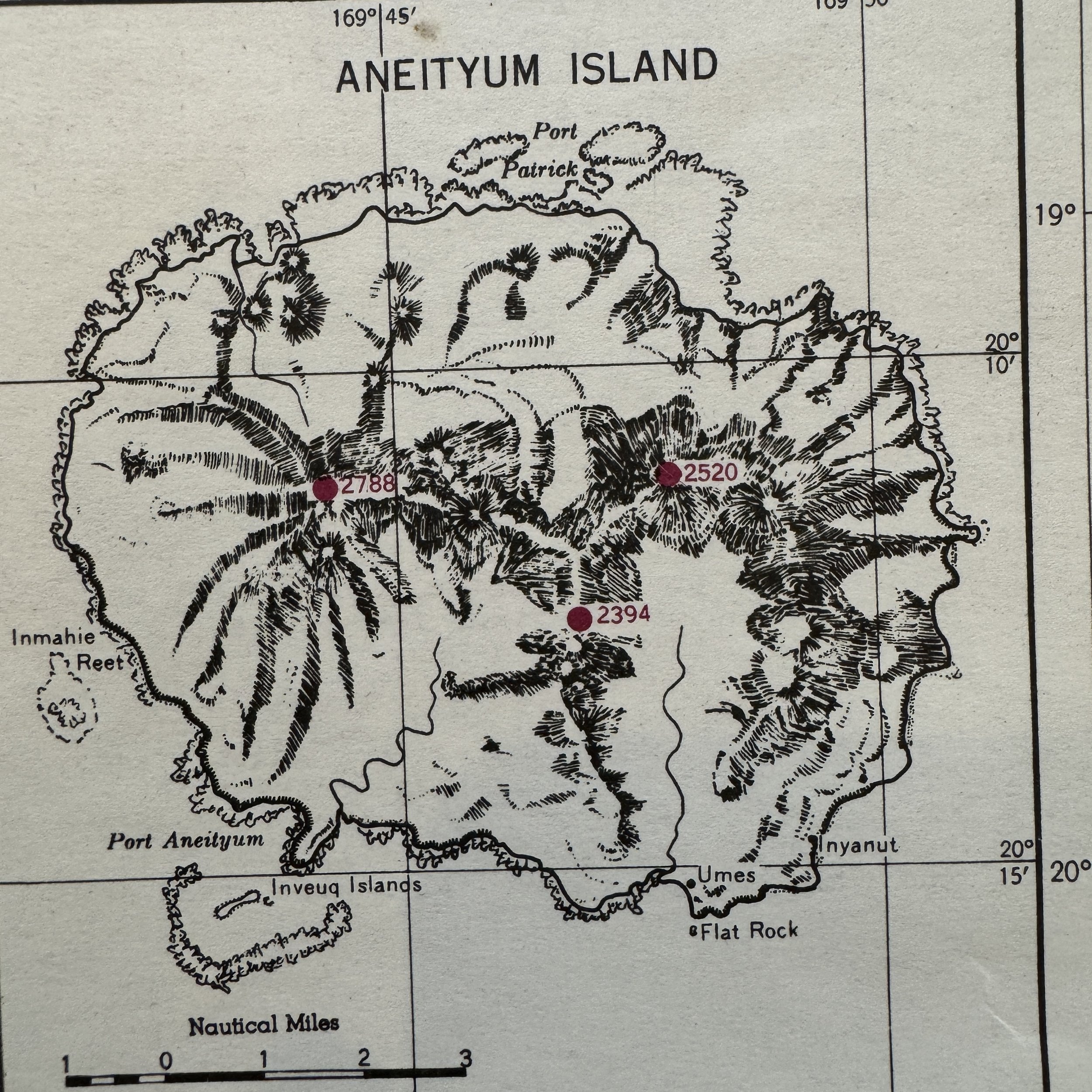
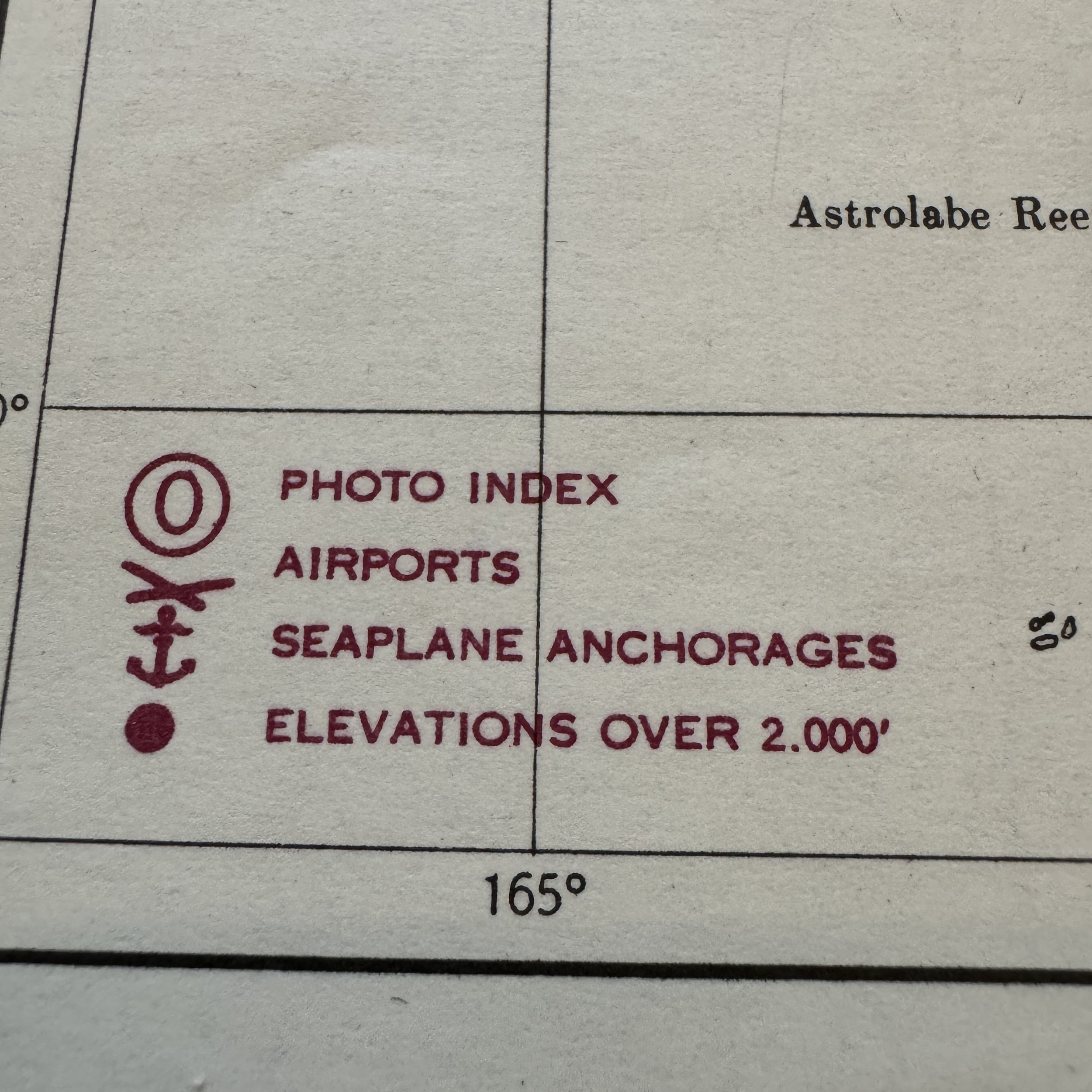
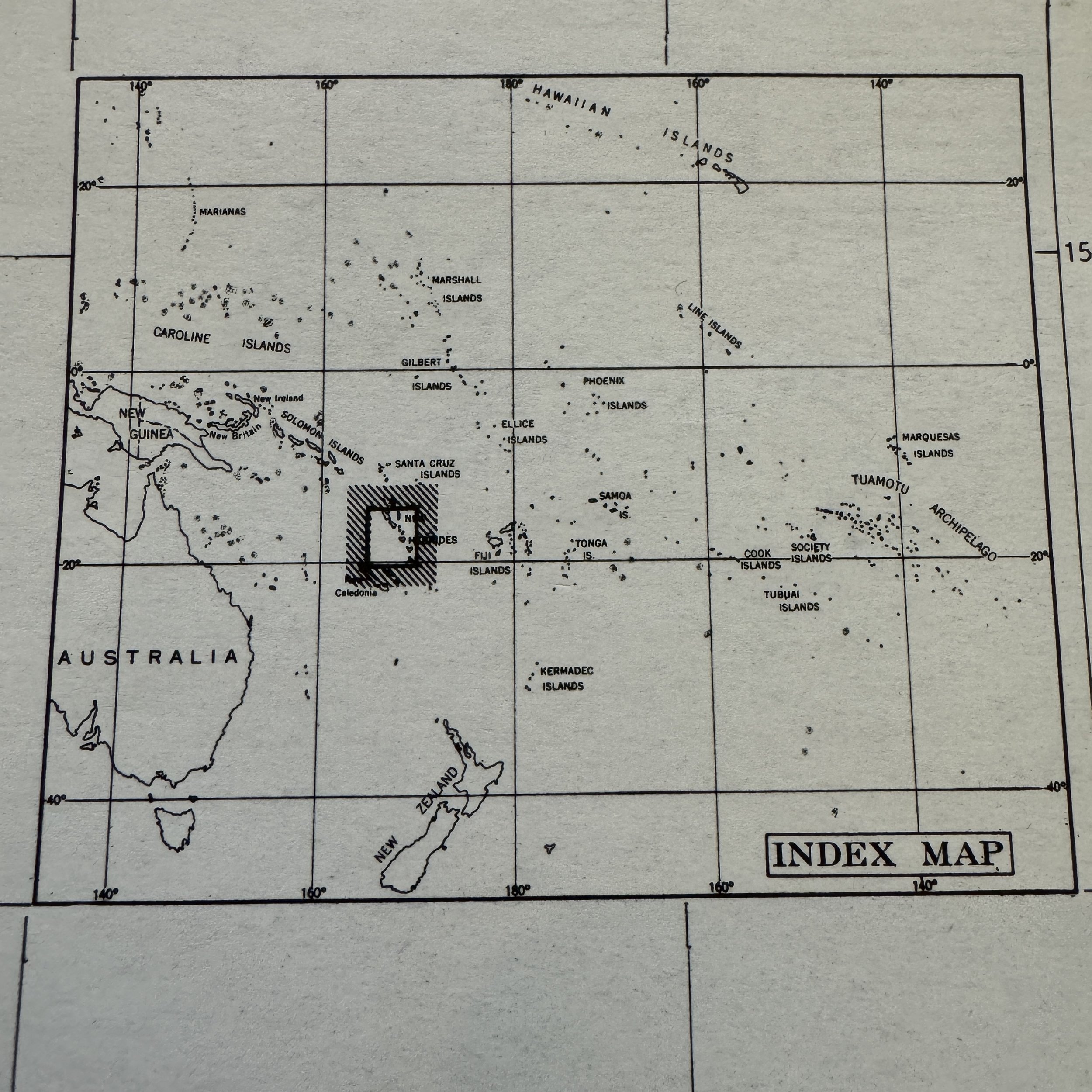


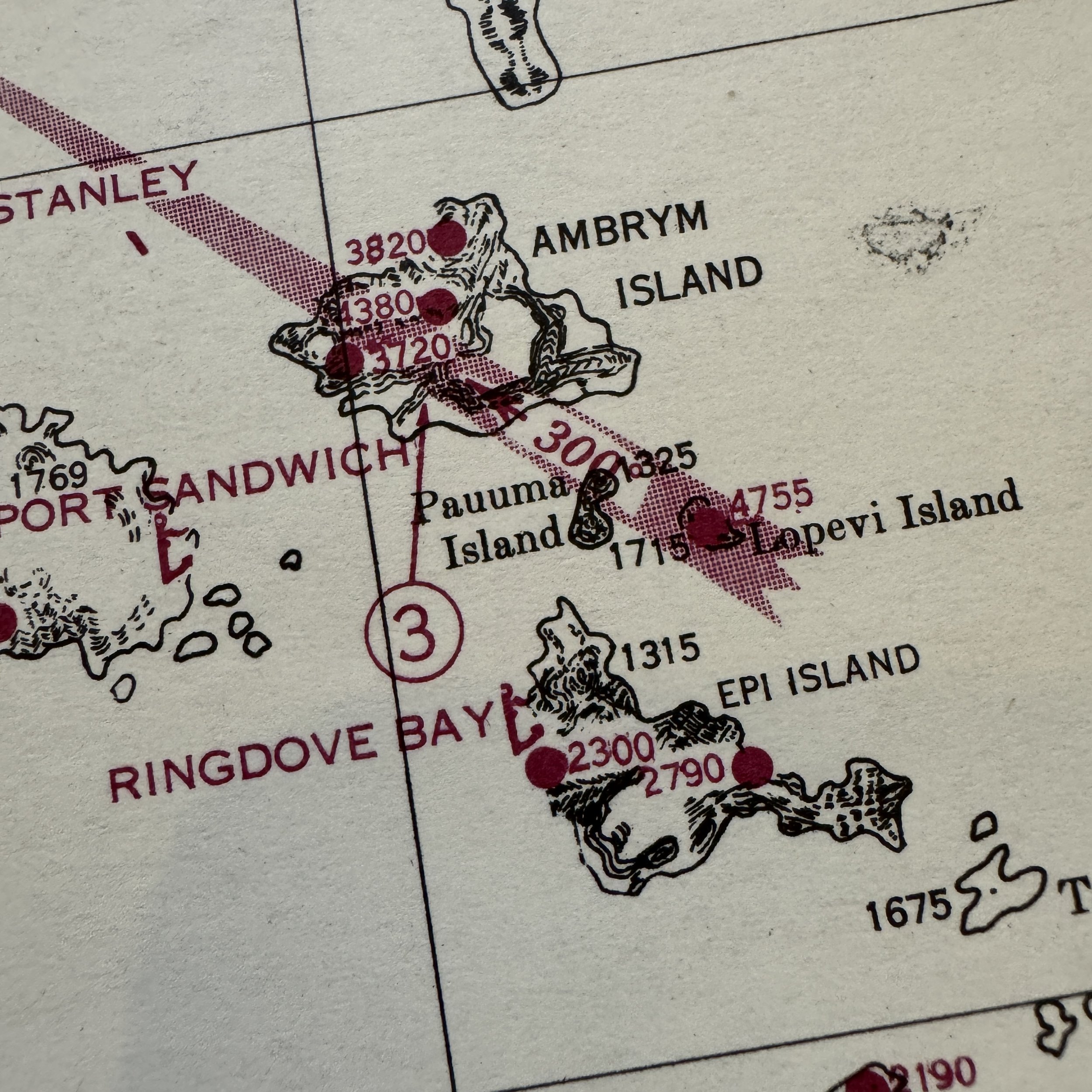

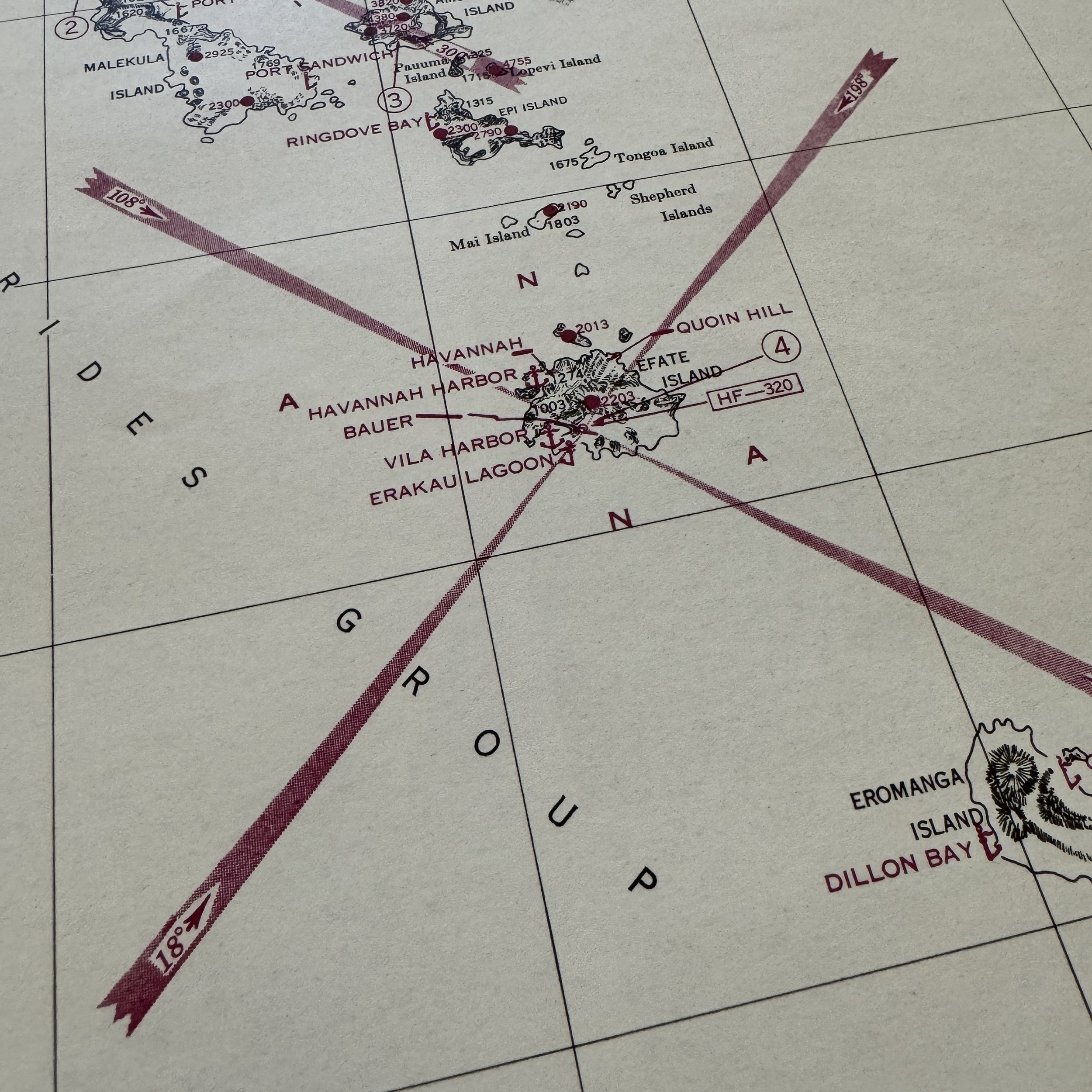

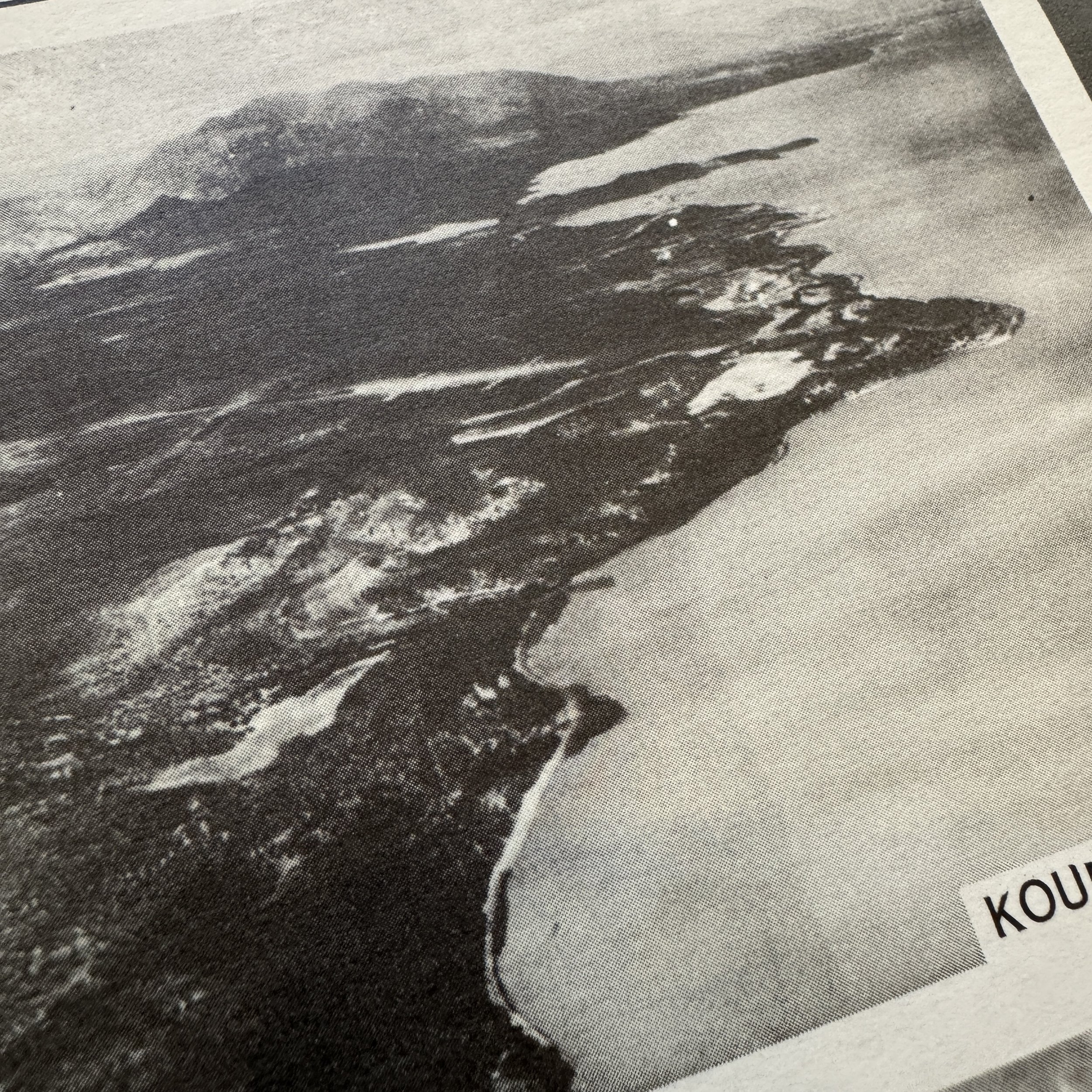


RARE! WWII 1944 CONFIDENTIAL "New Hebrides Islands - New Caledonia" U.S. Army Air Force Pacific Theater Pilot’s Flight Chart (Double-Sided)
Comes with a hand-signed C.O.A.
Size: 14 × 17 inches
This exceptionally rare, museum-grade World War II artifact is an original CONFIDENTIAL double-sided pilot’s flight chart, dated January 1944, and specially produced by the Assistant Chief of Air Staff Intelligence - Headquarters Army Air Force (Washington, D.C.). Issued in extremely limited quantities, this chart was distributed only to USAAF Squadron Groups and Headquarters, intended for use aboard operational aircraft under the supervision of commanding officers.
Due to its highly sensitive nature, if an aircraft carrying this chart was forced down over enemy territory, the classified material was to be destroyed by burning. If ditched at sea, it was to be sunk “by the most practical method” to prevent it from falling into Japanese hands. Containing critical flight navigation and runway landing assistance for islands throughout the Pacific Theater, this chart was an essential tool for World War II pilots.
Titled "New Hebrides Islands" this U.S. Army Air Force flight chart provides detailed navigational aids, including the precise locations of airfields, seaplane anchorages, and elevations across this region of the Pacific Theater. The reverse side focuses specifically on New Caledonia, featuring military intelligence photographs offering aerial perspectives used by pilots, copilots, and navigators to determine their exact positioning. These CONFIDENTIAL images provided essential real-time reference points, mirroring what aircrews would see during their operations over these islands during the war.
This artifact is a remarkable piece of aviation and military history, offering a rare glimpse into the intelligence materials that guided U.S. forces during World War II.
The U.S. Military in the New Hebrides and New Caledonia During World War II: 1944-1945
During World War II, the islands of the South Pacific, including New Hebrides (now Vanuatu) and New Caledonia, played a crucial role in supporting Allied operations against Japan. The U.S. military established strategic bases in these locations to provide logistical support, air operations, and medical facilities, all of which were essential for the broader campaign in the Pacific Theater. By 1944-1945, the U.S. had firmly entrenched itself in these regions, and their significance shifted from being frontline operational hubs to key logistical and training centers as the war progressed toward its final stages.
New Caledonia and New Hebrides were critical to the U.S. military as part of the overall island-hopping strategy aimed at isolating Japanese forces and securing supply lines. Situated between Australia and the Solomon Islands, these locations served as vital bases for the buildup of American forces and equipment before major assaults in the Pacific. New Caledonia, in particular, had Nouméa, which became one of the largest U.S. military bases in the South Pacific. The deep-water port and well-developed infrastructure made it an ideal logistical hub for moving troops, fuel, ammunition, and supplies. Meanwhile, New Hebrides, with its more scattered geography, provided airfields, naval anchorages, and forward bases that supported operations in the Solomon Islands and beyond.
By 1944, the role of both island groups had evolved. With major battles shifting toward the Philippines, Iwo Jima, and Okinawa, the New Hebrides and New Caledonia functioned more as rear-echelon support bases rather than active combat zones. However, their contributions to the war effort remained indispensable, particularly in providing medical treatment to wounded soldiers, repairing damaged aircraft, and housing U.S. Army Air Forces (USAAF) squadrons.
The U.S. Army Air Forces (USAAF) played a key role in the war effort in the South Pacific, and airfields in New Caledonia and New Hebrides supported a variety of missions, including reconnaissance, bomber escort, and long-range strikes against Japanese positions. By 1944-1945, air operations had shifted primarily toward supporting the continued advance into the Philippines and the Central Pacific, but these bases still served as critical transit points for aircraft and pilots heading into combat zones.
One of the primary air units operating in the region was the 13th Air Force, which had been established in 1942 to coordinate U.S. air operations in the South Pacific. Although the bulk of its operations had shifted north by 1944, many of its aircraft, including P-38 Lightning fighters, B-24 Liberator bombers, and C-47 transport planes, continued to rely on airfields in New Caledonia and New Hebrides for refueling, repairs, and resupply.
The P-38 Lightning, known for its twin-engine design and long-range capabilities, was a critical asset in this theater. Pilots stationed in New Caledonia frequently flew escort missions for bombers en route to targets in the Philippines, the Mariana Islands, and even as far as the Ryukyu Islands. Additionally, reconnaissance missions were launched from these bases to gather intelligence on Japanese movements in the Southwest Pacific. These flights helped shape the strategic planning for future operations by providing updated maps of enemy defenses, supply routes, and airfields.
The B-24 Liberators were instrumental in executing long-range bombing raids on Japanese supply depots, airfields, and troop concentrations. While the primary focus of bombing campaigns had moved northward by 1945, the Liberators based in New Hebrides and New Caledonia were occasionally used to strike remaining Japanese strongholds in the Solomons, bypassed islands in the Gilbert and Marshall Islands, and even enemy shipping lanes that had not yet been fully interdicted.
Transport aircraft such as the C-47 Skytrain also played a crucial role in the South Pacific campaign. These aircraft were used extensively for troop movements, medical evacuations, and resupply missions. By late 1944, as American forces pushed deeper into the Pacific, the need for medical evacuation increased. Airfields in New Hebrides and New Caledonia became key hubs for airlifting wounded soldiers from the front lines back to fully equipped hospitals in Nouméa before they were either treated on-site or sent to Australia or the United States for further medical care.
Supporting the air operations in the region were the U.S. Navy and the Seabees, the Naval Construction Battalions responsible for building and maintaining military infrastructure. The Seabees played a crucial role in expanding and maintaining airfields in New Hebrides and New Caledonia, ensuring that runways could accommodate heavy bombers, transport planes, and fighters.
In New Caledonia, the main airfield at Tontouta was expanded multiple times to support the growing demands of the air war. New Hebrides had several airfields, including bases at Espiritu Santo and Efate, which were vital for refueling and aircraft maintenance. These locations housed repair depots that serviced battle-damaged aircraft returning from combat zones, often salvaging parts from wrecked planes to keep others in the fight.
Naval installations were also built to support amphibious operations. Although major combat operations had moved away from the South Pacific by 1944, these facilities were still used to train U.S. Marine and Army units in jungle warfare, amphibious landings, and logistics—preparing them for future operations in the Philippines and Okinawa.
By 1944, thousands of American servicemen were stationed in New Caledonia and New Hebrides. With active combat moving further north, the daily life of these troops became more routine, consisting of training exercises, base maintenance, and aircraft operations. The islands offered a stark contrast to the combat zones, providing soldiers and airmen a relatively safe environment to rest and recover before being redeployed.
Recreation was a critical part of maintaining morale among troops stationed in these islands. Nouméa, as the largest American base in the South Pacific, had clubs, cinemas, and organized sports to keep soldiers entertained. The USO (United Service Organizations) also arranged entertainment, including visits from famous performers and comedians who toured military bases. Despite the respite from combat, many servicemen found life monotonous and longed to return home or to the front lines.
Medical care was another vital function of these bases. With numerous wounded soldiers being flown in from battlefields across the Pacific, hospitals in New Caledonia were well-equipped to provide surgical care, long-term recovery, and psychiatric treatment for those suffering from combat fatigue (now recognized as PTSD).
As the war drew to a close in 1945, the role of New Hebrides and New Caledonia as military hubs diminished. With the end of the island-hopping campaign and the eventual defeat of Japan, the massive infrastructure built by the U.S. military was gradually dismantled, though some remnants of these bases remain to this day.
The U.S. military’s presence in New Hebrides and New Caledonia was a testament to the scale of the Pacific War and the importance of logistics, airpower, and medical support in securing victory. These islands may not have seen major battles during the final years of the war, but they played an essential role in sustaining the effort that ultimately led to Japan’s defeat. Today, the contributions of the men and women who served in these bases remain a vital part of the history of the Pacific Theater, underscoring the logistical and operational complexity of World War II in the South Pacific.